Accessible Bathroom Requirements for Commercial Buildings for Wheelchair Users
Contact TubToday for Commercial accessible bathrooms designed for wheelchair users.
Many people are finding themselves needing to accommodate their business due to using a wheelchair. There are currently at least 30 million Americans using wheelchairs and those numbers continue to increase. The bathroom can be one of the most difficult places in your business for people with disabilities. The bathroom can present many access challenges to people who use a wheelchair or need accommodations. Bathroom safety is one of the number one concerns in making a business accessible. The tub and shower are the most hazardous areas for young adults and most falls for elderly occur near the toilet. Falls in the bathroom can be due to a wet floor, small spaces to maneuver, and/or bending and lifting required in accessing the tub, shower or toilet. The ultimate goal in accessible design is to make the bathroom space safe for everyone who uses the bathroom. Universal design can better accommodate wheelchair users and can make the bathroom more comfortable for all users and many times can be done without sacrificing style. It is important to carefully plan the building or remodeling of an accessible bathroom by taking inventory of the users capabilities and preferences.
Remodeling or Renovating for Commercial Bathroom Accessibility
- What bathroom activities require a user to need assistance?
- Are there medical supplies necessary and where do they need to be placed?
- Is a tub or shower required?
- What activities does a user do independently where grab bars should be placed?
- Will users condition deteriorate over time and what will users needs be in the future?
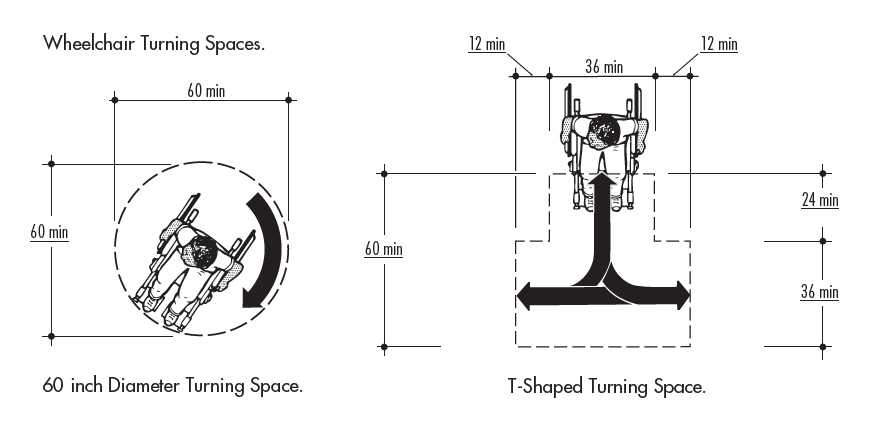
Things that TubToday will take into account when designing your accessible bathroom are:

Bathing: Shower & Bathtub Accessibility
- Some users can benefit from a rolling shower seat or fixed shower seat in the shower. The height of the shower seat should be between 17″ and 19″. If the bather doesn’t use the seat for showering, a stool or plastic chair can be used to sit while taking a shower.
- For people who use wheelchairs, walkers, or are at risk of falls, curbless showers are ideal and can be used by anyone regardless of ability. The opening to the shower is level with the floor and slopes down to the drain. To turn around in the shower or for assistance, the shower should be 36″ wide for someone in a transfer seat and 60″ wide for someone in a wheelchair.
-
It is easier to access a walk-in tub. It allows users to walk into the tub without having to climb over the side. The tub controls should be installed near the front edge to avoid a long reach.
-
All bathing areas should be equipped with grab bars. Two bars should be installed on the sidewall of a tub at the standing and sitting ranges. Grab bars should be installed on all three walls of a roll-in shower and on two walls of a transfer shower. When possible, place controls near grab bars.
-
To prevent falls in the shower, it is essential to have a non-slip floor. Non-slip floors can be created with textured tiles or slatted wood trays.
-
The installation of anti-scald mixing valves will prevent burns when water pressure changes. Temperatures in the tub and shower should not exceed 120 degrees.
-
Place items that a user will want to reach such as hair care, bathing products, soap, washcloths, etc. Ensure that all products are adequately stored and placed so they don’t fall on the floor and are easily accessible to all users.
-
Safety can be increased by installing overhead lights in showers and using glass walls instead of curtains.
-
Install shower controls where the operator can use them without getting wet. Install a handheld showerhead that can accommodate a seated bather as well. Make sure it has a 60-inch hose.
-
For preventing wet floors after showering, a towel shelf or hook should be installed within easy reach.

Commercial Bathroom Sink & Vanity Accessibility
-
For standing and seated users, the sink should be mounted on the wall without a cabinet underneath.
-
Sinks approached from the front of the sink must have a 34″ maximum rim height and a 27″ clearance for knees, or must be able to be approached from one side only.
-
Hands-free faucets with sensors that detect hands under the faucet or single-handle faucets that can be easily turned on and adjusted will make the sink more accessible.
-
Install a lower-placed mirror, an extra-long mirror, or a tilt mirror for everyone to use.
-
Use sturdy furniture/vanities that can be grabbed onto so that one can maneuver around the bathroom when a grab bar is not within reach.
-
Consider placing items that may need to be reached such as dental care, prescriptions, eye care/contact lenses, and first-aid supplies.
-
You should also consider storing and accessing hair dryers, curlers, makeup, bathroom linens, and bath cleaning supplies.
-
A vanity with electrically adjustable height counters is more expensive, but offers greater accessibility.
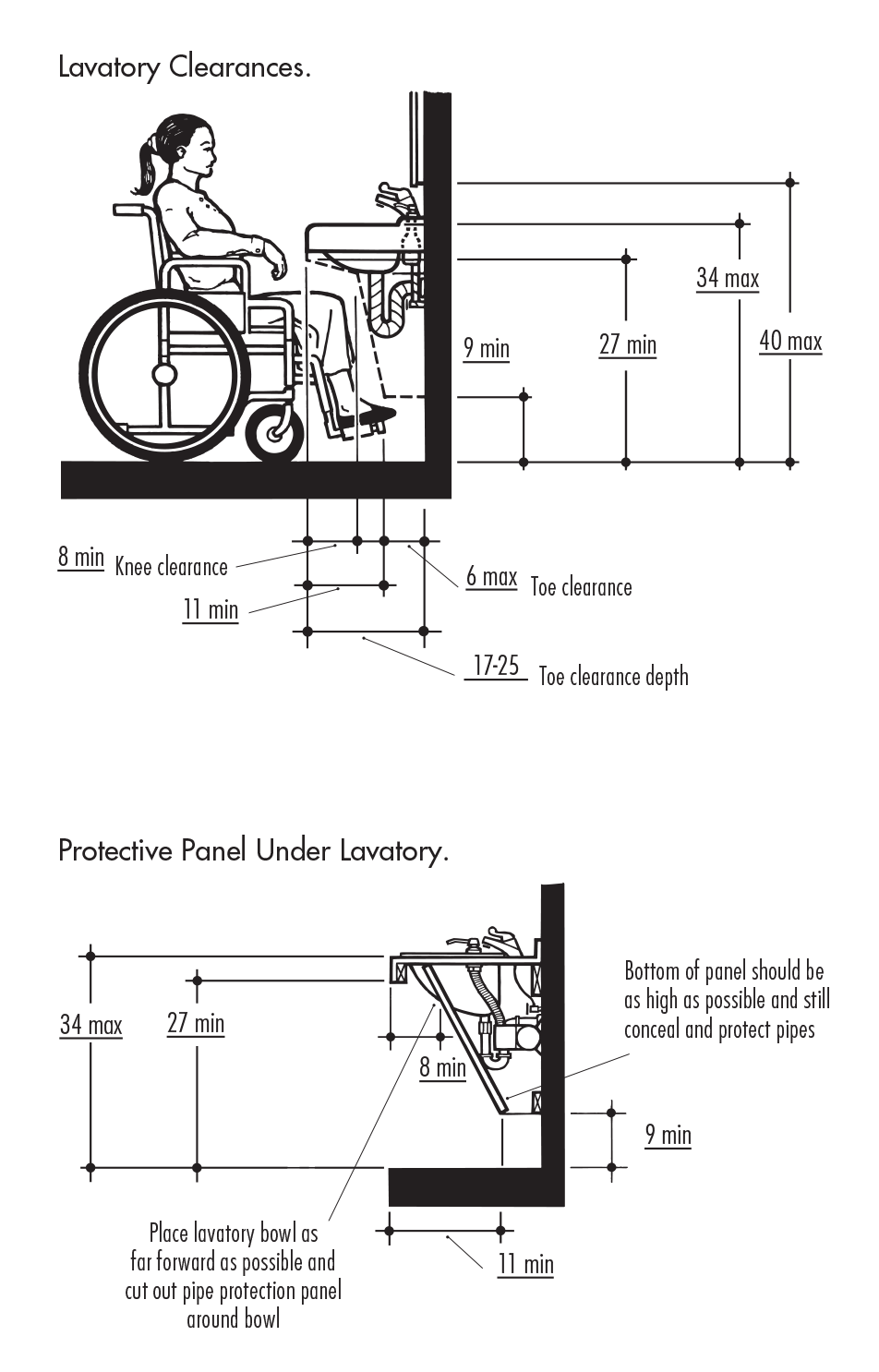
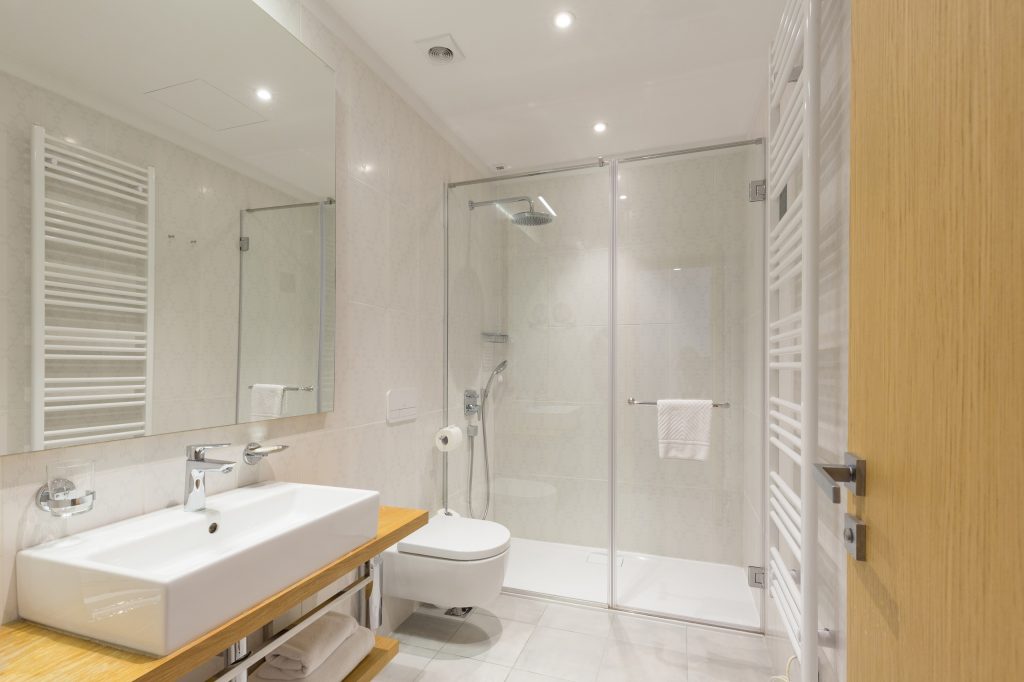
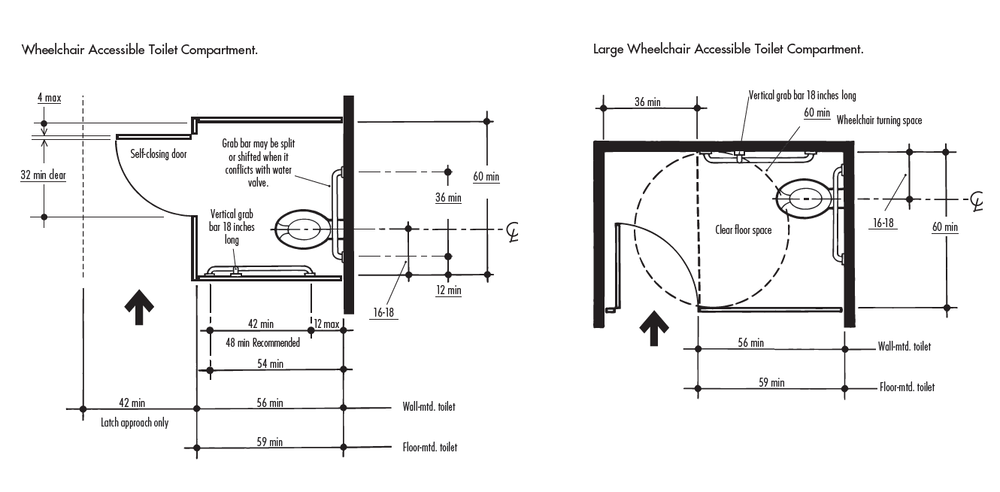
Commercial Bathroom Toilet Accessibility
-
The ADA recommends that toilets be 17″-19″ high. It is the most comfortable height for all users. It is easier to lower, stand, or transfer from a wheelchair/walker to a toilet with a higher toilet seat.
-
When replacing the toilet is not an option, thicker toilet seats can be used to add height to the toilet.
-
Wall-mounted toilets can be mounted at a height that is customized for each individual.
-
Provide users with a comfortable height for the toilet paper dispenser.
-
Those who find it difficult to clean with toilet paper may benefit from the installation of a bidet in order to maintain good hygiene and privacy. The dispenser prevents twisting and reaching for toilet paper.
-
Place things that a user might need to reach when using the toilet in an accessible place. Supplies such as toilet paper, sanitary products, wipes, and medical equipment.
-
A grab bar should be installed on one side of the toilet at a distance of 18 inches from the nearest wall or fixture; however, the ideal placement is between two support bars that are 36 inches apart.
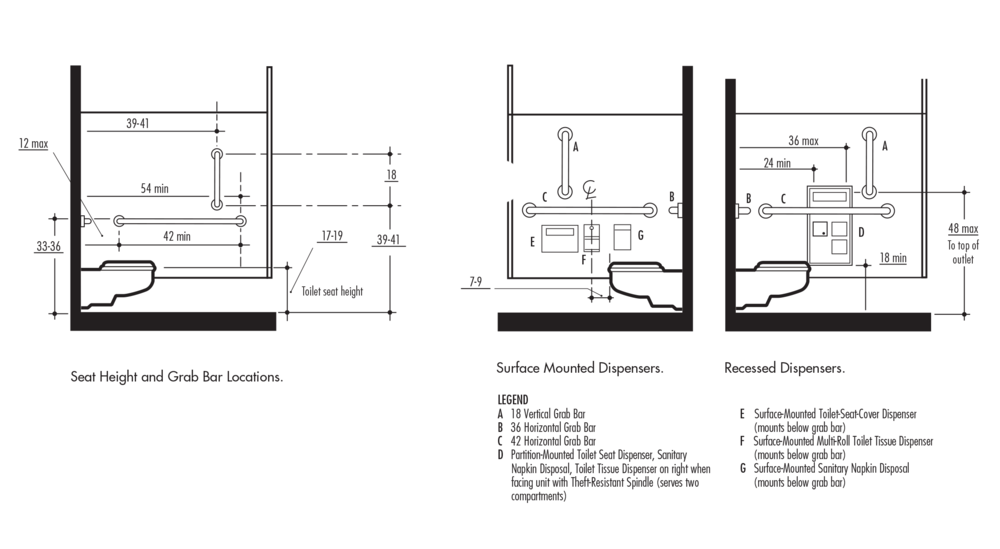
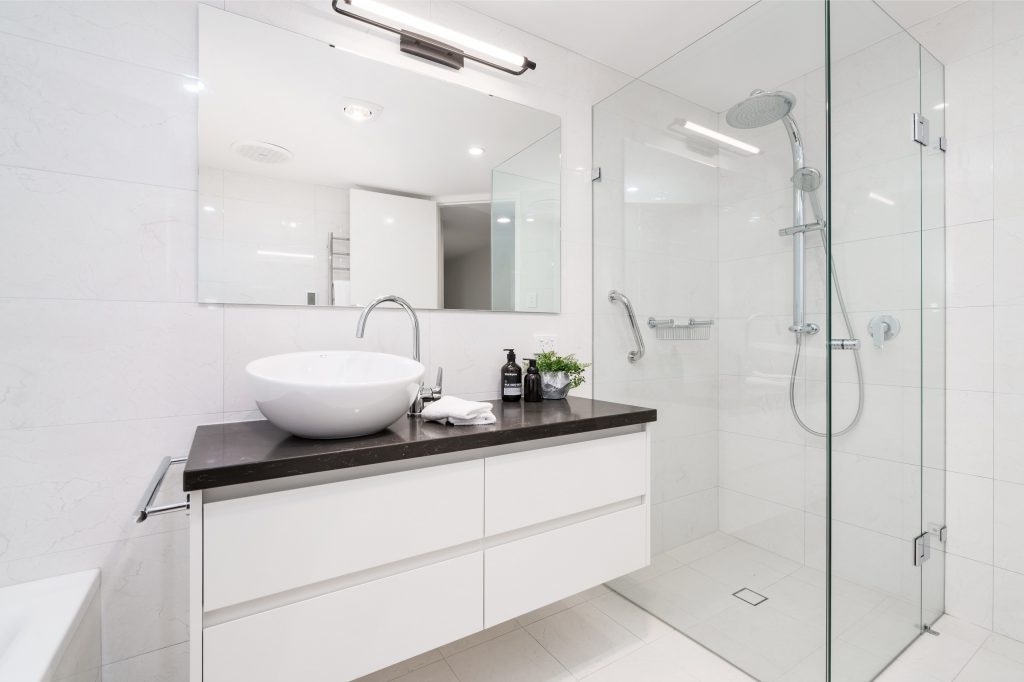
Bathroom Lighting
-
It is essential to have proper lighting in the bathroom for safety reasons. Shadows should be avoided and even lighting should be ensured. It is ideal to use natural light as much as possible.
-
Light switches should be lowered so that someone in a wheelchair can access them.
-
In order to prevent glare, extra light should be distributed evenly throughout the entire bathroom. Users can control brightness and softness with dimmers.
-
Individuals with difficulty accessing light switches can use motion detector lights.
-
Make sure switches have large toggles or push buttons that don’t require a pinching motion to operate.
General Commercial Bathroom Access & Safety
-
A wheelchair-accessible bathroom needs to be 30″ x 48″ to accommodate mobility devices in front of the plumbing fixtures.
-
The doorways will need to be widened to accommodate wheelchairs. For wheelchair users, the door into the bathroom should be at least 34″ wide. Lever style door handles are easier to use than doorknobs.
-
There will be more space inside a bathroom with a door that swings outward instead of inward.
-
A pocket door is another practical option for optimizing space in small spaces.
-
Check the floor for loose bath mats. A bath mat is a tripping hazard for people in wheelchairs.
-
Get clutter out of the way by providing easily accessible storage compartments with pull-out shelves. The placement of these items within reach should be based on the individual needs of the user.
-
Access to all accessories, such as robe hooks, towel bars, paper dispensers, soap dishes, toothbrush holders, and shower shelves, should be considered.
-
To prevent burns in the shower or sink, lower the hot water temperature as much as possible.
-
Hair dryers, toothbrushes, and electric razors should be plugged into grounded or lower outlets.
-
There are many lifts that provide transfers in the bathroom, such as hydraulic chair lifts, sling-type lifts, rolling transfer benches, drop-in tubs that have a platform that serves as a transfer bench, etc. There should be comfortable and convenient fixtures and fittings, such as things that are easy to operate.

